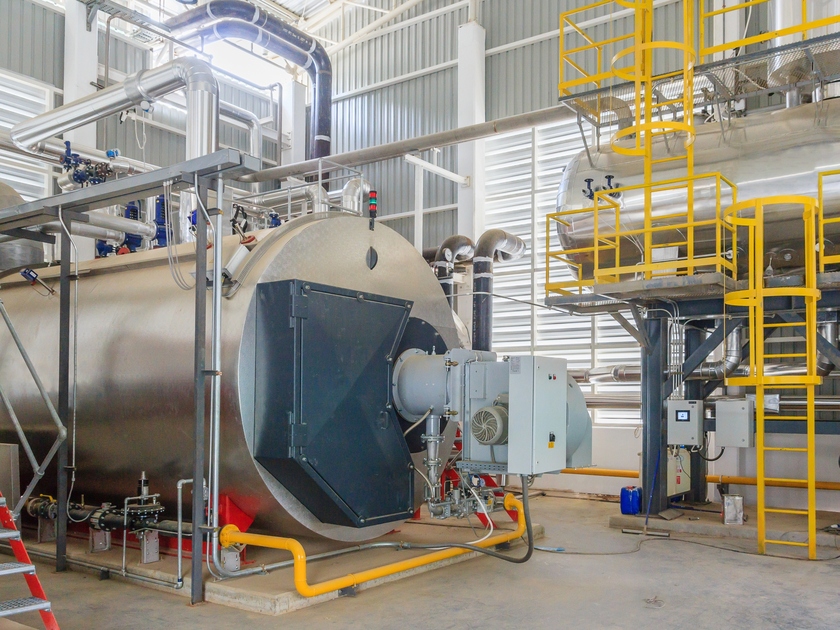Boilers can waste a lot of heat during the combustion process, especially if that heat isn't being transferred into steam or hot water. Recovering this wasted energy with economizers helps improve combustion heat transfer and increase boiler efficiency.
Economizer technology
Economizers are air-to-water heat exchangers. There are two types used for boilers: feedwater and condensing.
Feedwater (non-condensing) economizers are the most commonly used and the least expensive, providing an efficiency gain of up to 5%. They maintain the flue gas temperature above the flue gas condensing temperature to prevent corrosion of the ducting. Heat is captured from the flue gas and transferred to the feedwater.
Because the feedwater is at a higher temperature, the boiler doesn't require as much heat to create steam, using less fuel and saving money. A higher feedwater temperature also allows the boiler to respond more quickly to rapid load demands. For natural gas-fired boilers, the lowest temperature flue gas can be cooled to is about 250°F. Otherwise, condensation and stack corrosion occur.
Condensing economizers cool the downstream flue gas below its dew point, which is about 135°F for natural gas combustion. The economizer reclaims both sensible heat from the flue gas and latent heat by condensing flue-gas water vapor, improving boiler efficiency by up to 10%. Because these economizers extract additional heat, they lower the outlet exhaust temperature even more. In certain applications, the water can be used elsewhere in the facility. However, more expensive stainless-steel ducts are required to prevent condensate corrosion.
Economizers are a good option for improving boiler operating efficiency, especially when a large amount of makeup water is used. Efficiency and potential savings depend on the boiler's stack temperature and hours of operation.
Economizer equipment prices range widely, depending on size and type of boiler. Installation costs are higher if piping and equipment must be moved to make room for the economizer. Payback periods are typically several years or longer.
Are economizers right for you?
Economizers are a good fit for a variety of applications, such as food processing, textile plants, paper manufacturing, hospitals and district heating systems.
One food processing plant installed an economizer on a 22.5 MMBtu/hour boiler, the flue gas temperature was reduced from 300°F to 120°F. The recovered 2 MMBtu/hour of energy was used to heat makeup water, reducing steam requirements.
When considering an economizer upgrade, follow these guidelines:
- Determine the stack temperature after tuning the boiler to the manufacturer's specifications.
- Make sure the boiler operates near optimum excess air levels; clean all heat transfer surfaces.
- Carefully analyze your current boiler configuration, including piping.
- Determine the minimum temperature stack gases can be cooled to based on dew point, cold-end corrosion and the type of heat transfer surface.
- Consider fuel costs, equipment and installation costs and the potential return on investment.
In the right application, an economizer retrofit can help save energy and improve your operations.

